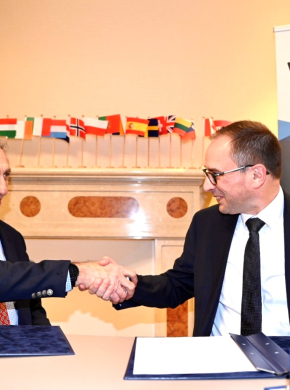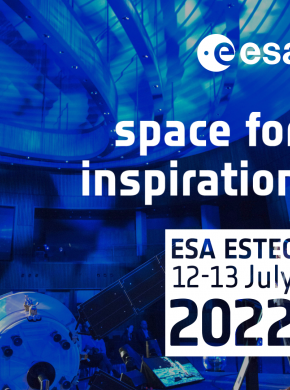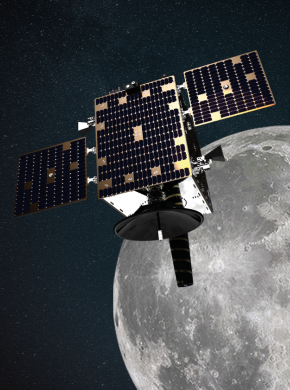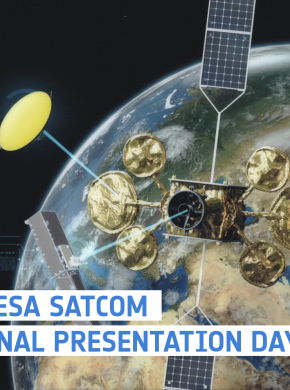Background
Recent years have seen a surge of development activity within the launch vehicle sector, with many new projects being outlined by both players, new entrants, and even start-up companies. These new projects span a broad range of capabilities: from systems designed for placing CubeSats into Very Low Earth Orbit (VLEO), up to a new class of “Super Heavy-Lift” launch vehicles (SHLV or SHLLV) focussed on interplanetary missions supporting human exploration.
Whilst not all these projects will reach fruition, it is likely that some will enter service within the coming years. The introduction of these new launch capabilities may also enable new deployment concepts such as regularly “scheduled” launch services to be established, whereby launches are manifested at regular pre-set intervals with satellites embarked as and when they are ready to fly. The SHLVs being developed or discussed today may result in a revolution in launch capabilities, including:
- greater average launch mass capacity (>5-10x) to LEO
- increase in allowable payload volume (>4x)
- greatly increased launch cadence (>4x)
- a reduction in launch price (~10%)
Although it is not the primary motivation behind their development, the use of SHLVs for deploying communications satellites into LEO, MEO, or GEO may have a significant disruptive influence on the future satellite communications market. This could result in fundamental changes to satellite design, AIT processes, operations, deployment, and corresponding business models.
The proposed activity would therefore comprise an assessment of the impact that these new SHLVs might have on the satcom market. Opportunities for radically different approaches to mission design, satellite sizing, lifetime, reliability, and deployment scenarios will be investigated. In addition to the impact on conventional/established satcom mission scenarios, the activity would also address novel mission concepts that might be enabled by the introduction of such a disruptive capability. For example, the larger volume in the launcher fairing could allow very-large antenna reflectors to be used, or the reduction in launch prices per kg for the satellite operator could lead to satellites with a massive increase in on-board processing power, enable the use of low-price pressurised/shielded COTS-based payloads, or the use of completely different structural design concepts. As a far-fetched goal – as these launchers are designed for human spaceflight – human servicing of satellites could even be imagined, as was the case for the Hubble Space Telescope.
Additionally, constellations comprising large numbers of satellites could be deployed in a much shorter timeframe than is currently possible, with corresponding implications for satellite design lifetime, required manufacturing capacity, and reduced time to market for new systems.
These elements would also be investigated under the proposed study, as would how to accommodate and deploy a broad range of satellite types and sizes (from nano to very large) from within a SHLV fairing. The corresponding impact on satellite AIT, the required launch-base facilities, and associated logistics will also be considered.
Objectives of the Activity
The objectives of the study are to assess all credible SHLVs and, based on their capabilities, identify and analyse the main disrupting factors across technical, commercial and legal domains with the aim of developing new business cases and mission scenarios that can exploit these new capabilities. Once these new opportunities are analysed, driving requirements will then be derived that point to the development of technical solutions and related roadmaps and schedules. This may cover technologies, products, and services for all aspects of the Satcom market (Space, Ground, User segments, etc). In other words, if one was to fly on an SHLV what would be best to fly and what would be needed on the ground?
WHAT WE ARE LOOKING FOR
We are looking for experts in the following technical domains:
• Telecom business and mission development experience, and
• Satcom system engineering (incorporating space and ground domains at all levels from mission to sub-systems and possibly components).
ABOUT THIS OPPORTUNITY
The Invitation to Tender (ITT) is open until 6 Dec 2022.
Proposals can be submitted via esa-star on the link below:
ABOUT THE ARTES FUTURE PREPARATION PROGRAMME
ARTES FP is a key programme element, at the start of the ARTES ‘feeding chain’ that offers the possibility to acquire knowledge on future satcom market perspectives, investigate future system concepts and prepare initial ‘dossiers’ on strategic initiatives that cannot be developed usually at every Member State’s level. It is based on the concept of a European common effort to produce quality results to set the future of SatCom.
You can find more information in the link below:
https://artes.esa.int/future-preparation
NEWS AND EVENTS
ESA and Viasat towards a Direct-to-Device partnership
The European Space Agency (ESA) and Viasat announced an agreement to work together towards a public-private partnership for a direct-to-device project. As part of ESA’s direct-to-device initiative, the partnership…
European Space Agency kicks off groundbreaking generative AI project for satellite communication de…
Applied Data Science Partners (ADSP) is running a study on behalf of ESA to explore how generative artificial intelligence (AI) can transform satellite system design processes.
Opportunity: Concepts for ultra-large aperture antennas (ARTES FPE 1A.113)
Satellite antenna size and the data throughput achievable in a satellite communications channel are directly related, but the benefits from an increased aperture size can also be used to enable access to smaller ground antennas or to improve…
Opportunity: Towards Standardised Inter-Satellite Link Solutions (ARTES FPE 1A.116)
There has been a steady growth in the number of new satcom systems announcing plans to make use of RF Inter-Satellite Link technology. In addition to reducing the complexity and cost of the associated terrestrial infrastructure, ISL…
Opportunity: Advanced Broadband Satcom Solutions for Rotary Wing Aircraft (ARTES FPE 1B.136)
Despite steady order growth for helicopters and an almost exponential growth in rotary wing UAVs worldwide, outside of military and defence applications the utilisation of satellite connectivity onboard such rotary wing aircraft is still somewhat…
REISSUED - Opportunity: Single Channel Full Duplex Techniques for Satellite Communications (ART…
In most satellite communication systems, full duplex operation (i.e., simultaneous transmit and receive functionality) is achieved by using two separate frequency channels with spectral filtering employed to achieve the required isolation between…
Space for Inspiration: Business Edition 2022
Sign up now to join the growing community to discuss the future of commercialisation in exploration. This event is a must for key players in commercialisation ranging from private industry, to public organisations and space agencies to financial…
Opportunity: Open-Source Satellite Constellation Simulator
The communications satellite manufacturing industry is going through a period of profound change. For decades, the primary source of sector revenue has been from building systems designed to operate in geostationary orbits. Within the last few…
The Moon – where no satnav has gone before
The test version of a unique satellite navigation receiver has been delivered for integration testing on the Lunar Pathfinder spacecraft. The NaviMoon satnav receiver is designed to perform the farthest ever positioning fix from Earth,…
Opportunity: The Application of Neuromorphic Processors to SatCom Applications
Artificial Intelligence (AI) is set to play a major role in the automation of future satcom systems, enabled by the significant advances in Machine Learning (ML) techniques of recent years. However, the computer processors that AI algorithms will…
Final Presentation Webinar - ARTES Future Preparation Machine Learnin…
ESA would like to invite you to the Final Presentation Webinar of the ARTES Future Preparation (FP) activity Machine Learning and Artificial Intelligence for Satellite Telecommunications.
This Webinar will take place on the 9th of June at…
ESA Satcom Final Presentation Days 2019
This is a unique opportunity to gain an overview of all the recently completed activities and to discuss them with colleagues from both ESA and industry across the satellite telecommunications sector.














